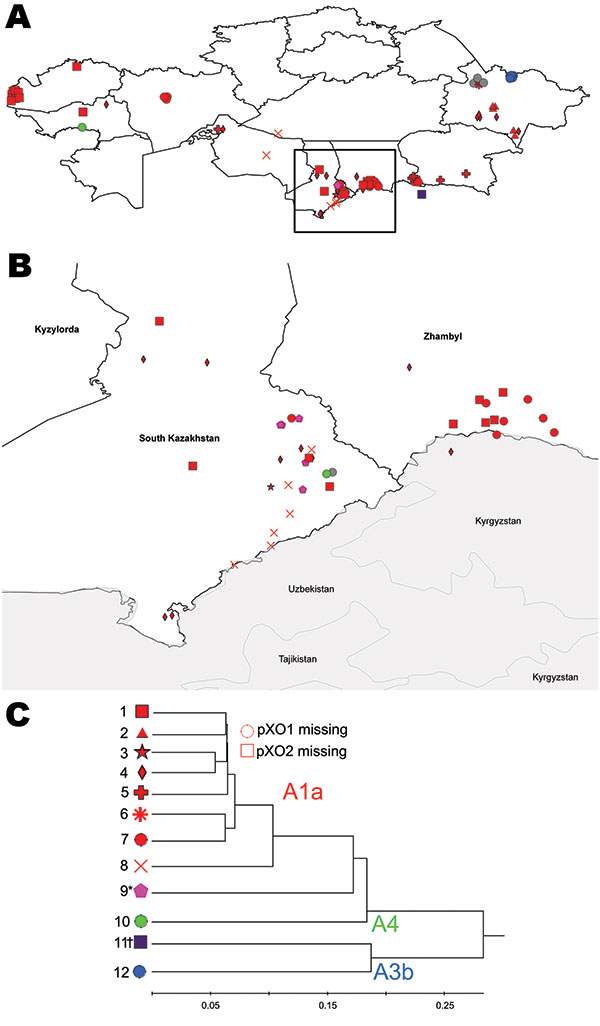Volume 16, Number 5—May 2010
Research
Historical Distribution and Molecular Diversity of Bacillus anthracis, Kazakhstan
Figure 3

Figure 3. Geographic distribution of genotypes of Bacillus anthracis strains in Kazakhstan (A), with a closer view of outbreaks within eastern and southern Kazakhstan (B). Different genotypes are represented by different shapes and color coding reflecting major genetic affiliations (C). * and † indicate novel subgroups. Scale bar indicates genetic difference.
1Current affiliation: Republican Sanitary Epidemiologic Station, Almaty, Kasakhstan.
2Current affiliation: VEN Consulting, LLC, Melbourne, Florida, USA.
3Current affiliation: University of Florida, Gainesville, Florida, USA.
Page created: December 23, 2010
Page updated: December 23, 2010
Page reviewed: December 23, 2010
The conclusions, findings, and opinions expressed by authors contributing to this journal do not necessarily reflect the official position of the U.S. Department of Health and Human Services, the Public Health Service, the Centers for Disease Control and Prevention, or the authors' affiliated institutions. Use of trade names is for identification only and does not imply endorsement by any of the groups named above.